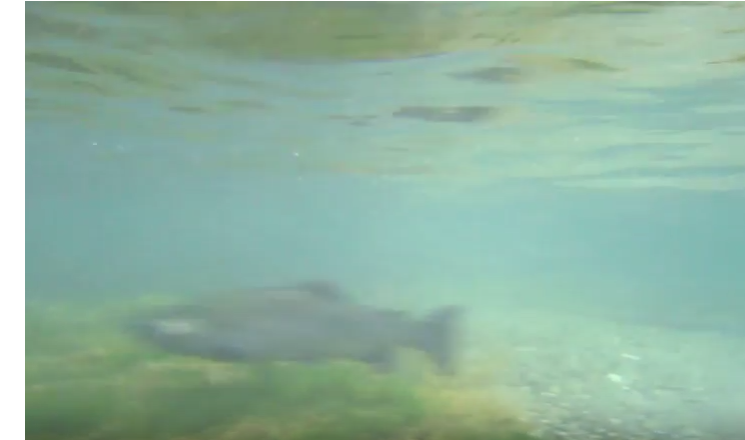“If you can, get out in a canoe or kayak and start at the headwaters of the Crystal River and enjoy watching these amazing fish,” says GLA Watershed Biologist, Rob Karner.
By canoe or kayak is an excellent way to watch these incredible fish as they make their journey. To access the river, use the NPS boat launch just below Fisher Lake, off Fisher Road and Dunn’s Farm.

Back in the mid 1970s, the MDNR stocked the Crystal River with salmon to curb the overpopulation of alewife that were dying and piling up on the shores of Sleeping Bear Bay each year. After stocking the river mouth, the salmon left their home stream and went out to feast on the alewife and after about two years, they migrated back to the Crystal River to spawn and die. They were huge and they filled the Crystal River by the thousands. Fast forward to today and the salmon continue to return to the Crystal River, mostly because of natural reproduction (as opposed to stocking). They are not quite as big and the number of salmon are only in the low hundreds versus in the thousands.
The mystery of how they go and live in Lake Michigan and then find their home stream is truly wondrous. Perhaps they “smell” the water at the mouth and somehow sense the signature Glen Lake water that empties into the bay. Once they swim up the Crystal River another amazing thing happens. The majority of the salmon jump over the dam and enter into the Fisher Lakes. They rest there for a week or so and swim up the Fisher Canal and into Big Glen. From there, they swim along the east shore of Big Glen until they reach the mouth of Hatlem Creek. Amazingly, they swim up the creek until they reach Hatlem Pond Dam. Some of the strongest will actually get past the dam (I have no idea how this happens) and swim up into the headwaters of Hatlem Creek only to be found in water about six inches deep. All the salmon die after spawning. They gradually get decomposed by fungi – even while alive, and are ironically transformed into unwanted pollution in our lakes and streams.
As amazing as it is to witness this natural wonder, the dark side of this event is that hundreds of salmon will die, decompose, and add nutrients to the water that are undesirable. In their natural habitat, bears will eat many of them as they are removed from the stream. I am not sure our black bears do this but it would help the biological pollution by removing the fish before they die.
So if you can, get out in a canoe or kayak and start at the headwaters of the Crystal River and enjoy watching these amazing fish. I have been watching them for over 40 years and always marvel at this natural phenomenon.
Rob Karner, M.S.
Watershed Biologist
Recent Comments